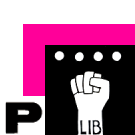User:Zuhui//Drafts/Plotter and I: Difference between revisions
No edit summary |
No edit summary |
||
| Line 1: | Line 1: | ||
<div style="font-size: 16px"> | <div style="font-size: 16px; width:80%";> | ||
There’s something magnetic about the pen plotter. I can’t fully explain | There’s something magnetic about the pen plotter. I can’t fully explain why, but maybe it’s the machine’s personality: it’s old, it’s loud, and it tears my paper apart. It’s not supposed to, but it does. Watching it move, scratch, draw an awkward streak I never asked for, and sometimes wrestle with the paper makes me wonder about its mannerisms, its presence, maybe even its spirit. | ||
<br><br> | |||
Since I started treating the pen plotter unlike any other machine, I’ve been wondering: '''Is the pen plotter | There's a kind of physical dialogue between us, through back and forth commands and responses. The commands feel like directions for performance: pen up, pen down, circle, square, fill, etc. like I’m giving instructions for it to move in ways that I can intuitively comprehend. Because it makes sense in my physical world. | ||
<br><br> | |||
But what if those commands do more than just trigger an execution? The way the plotter responds, leaving a new mark on the paper, feels like more than just following a command. | |||
The commands influence the physical reality. They alter what’s in front of me. The moment an instruction is given, it creates something through that utterance. | |||
<br><br> | |||
Since I started treating the pen plotter unlike any other machine, I’ve been wondering: '''Is the pen plotter [[User:Zuhui//Glossary#Performativity |performative]]''', in the sense that its actions bring something into existence rather than just executing commands? '''If it's not, then what would it take for it to be?''' | |||
</div> | </div> | ||
<br> | <br> | ||
==Mechanical Mark-making== | ==Mechanical Mark-making== | ||
Revision as of 21:19, 21 February 2025
There’s something magnetic about the pen plotter. I can’t fully explain why, but maybe it’s the machine’s personality: it’s old, it’s loud, and it tears my paper apart. It’s not supposed to, but it does. Watching it move, scratch, draw an awkward streak I never asked for, and sometimes wrestle with the paper makes me wonder about its mannerisms, its presence, maybe even its spirit.
There's a kind of physical dialogue between us, through back and forth commands and responses. The commands feel like directions for performance: pen up, pen down, circle, square, fill, etc. like I’m giving instructions for it to move in ways that I can intuitively comprehend. Because it makes sense in my physical world.
But what if those commands do more than just trigger an execution? The way the plotter responds, leaving a new mark on the paper, feels like more than just following a command.
The commands influence the physical reality. They alter what’s in front of me. The moment an instruction is given, it creates something through that utterance.
Since I started treating the pen plotter unlike any other machine, I’ve been wondering: Is the pen plotter performative, in the sense that its actions bring something into existence rather than just executing commands? If it's not, then what would it take for it to be?
